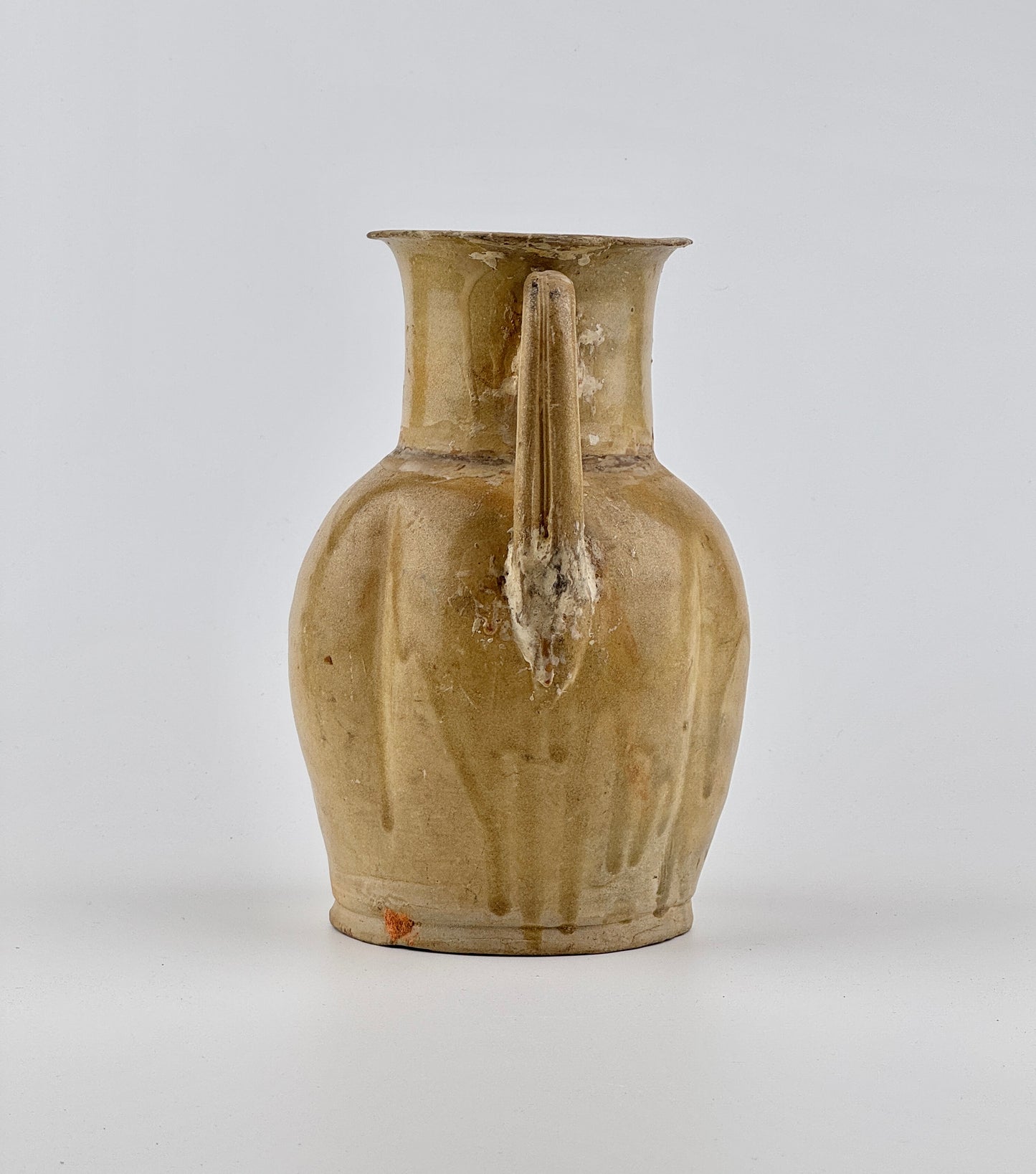AUA Oriental Art
CHANGSHA EWER, TANG DYNASTY
CHANGSHA EWER, TANG DYNASTY
Couldn't load pickup availability
Changsha Ware has distinct and recognizable designs and motifs. Painted designs often depict flowers, vines, clouds and mountain landscapes. Some painting is simply splotches of color that accentuate stamped and molded clay ornaments. You can see the expressions of people of the time through abstract depictions of Changsha ware
Date : 9th CenturyMade in : Hunan province
Size : 21.3cm (Height)
Condition : Good (Repairs on neck part and the top edge is slightly off)
Provenance : Acquired in 1999, Hongkong
Reference :
1) Sotheby's New York 17 March 2015 - Song Tradition: Early Ceramics From The Yang De Tang Collection - Lot 52
(Price realised : 12,500 USD / Type : Closely related)
https://www.sothebys.com/en/auctions/ecatalogue/2015/song-ceramics-yang-de-tang-collection-n09338/lot.52.html?locale=en
* Changsha Ware
Multiple “wares,” or styles, of pottery were developed during the Tang Dynasty. Many of these wares featured sancai glazing, a distinct color palette of lead glazes brushed, dipped, and poured over the vessel. Sancai glazed pottery used three colors derived from minerals: yellow-brown from iron oxide, green from copper oxide, and white from lead. Rarely, ceramicists included cobalt to create a blue glaze, but it was far too expensive for regular use. Changsha Ware is a classic example of a three-color sancai ware. Yet, it is also a style that revitalized ancient Chinese pottery. It was the first time that ceramicists perfected the underglaze painting technique. Artists decorated their clay bowls, jars, and figurines with colorful paintings and delicate calligraphy which were then protected by a transparent coat of lead glaze.
Changsha Ware was produced with distinct and recognizable designs and motifs. Painted designs often depict flowers, vines, and mountain landscapes. Some painting is simply splotches of color that accentuate stamped and molded clay ornaments. Being sold overseas, Changsha Ware integrated foreign cultural elements with traditional Chinese aesthetic principles.
Changsha Ware varies widely in form. To make sense of this variability, objects are typically classified into functional categories such as bowls, pots, ewers (or jugs), plates, boxes, lamps, pillows, candlesticks, censers, water droppers, mortars, paper weights, tea grinders, and figurines. Examples of these forms can be found below.
References : Timothy S.Y. Lam Museum of Anthropology
Share
























